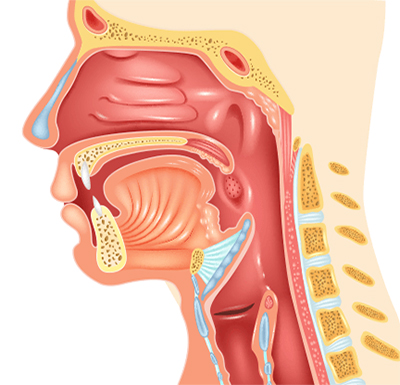
The vast majority of the lesions that occur in the breast are benign. Much concern is given to malignant lesions of the breast because breast cancer is the most common malignancy in women in Western countries; however, benign lesions of the breast are far more frequent than malignant ones. With the use of mammography, ultrasound, and magnetic resonance imaging of the breast and the extensive use of needle biopsies, the diagnosis of a benign breast disease can be accomplished without surgery in the majority of patients. Because the majority of benign lesions are not associated with an increased risk for subsequent breast cancer, unnecessary surgical procedures should be avoided. It is important for pathologists, radiologists, and oncologists to recognize benign lesions, both to distinguish them from in situ and invasive breast cancer and to assess a patient's risk of developing breast cancer, so that the most appropriate treatment modality for each case can be established.
The term "benign breast diseases" encompasses a heterogeneous group of lesions that may present a wide range of symptoms or may be detected as incidental microscopic findings. The incidence of benign breast lesions begins to rise during the second decade of life and peaks in the fourth and fifth decades, as opposed to malignant diseases, for which the incidence continues to increase after menopause, although at a less rapid pace.
In this review, the most frequently seen benign lesions of the breast are summarized as developmental abnormalities, inflammatory lesions, fibrocystic changes, stromal lesions, and neoplasms.
What are benign breast conditions?
Benign breast conditions (also known as benign breast diseases) are noncancerous disorders of the breast. They can occur in both women and men.
There are many types of benign breast conditions. Your health care provider may use the term fibrocystic change to describe a range of benign breast conditions.
Some benign breast conditions can cause discomfort or pain and need treatment. Others don't need treatment.
Many benign breast conditions mimic the symptoms of breast cancer and need tests (and sometimes a biopsy) for diagnosis.
If you need a biopsy, try not to panic or worry. Most biopsy results don't show cancer. Still, a biopsy is needed to know whether or not something is cancer.
This section discusses benign breast conditions in women.
What increases the risk of benign breast conditions?
A few factors can increase the risk of benign breast conditions, including
Menopausal hormone therapy (postmenopausal hormone use)
A family history of breast cancer or benign breast conditions
Lifestyle factors during the childhood and teen years :
For example, drinking alcohol during the teen years may increase the risk of benign breast conditions
Types of benign breast conditions
Hyperplasia
Hyperplasia describes an overgrowth (proliferation) of cells. It most often occurs on the inside of the lobules or milk ducts in the breast.
There are two main types of hyperplasia—usual and atypical. Both increase the risk of breast cancer, but atypical hyperplasia does so to a greater degree.
Cysts
Cysts are fluid-filled sacs that are almost always benign.
Cysts are more common in women ages 35-50 who are premenopausal. After menopause, cysts occur less often.
Cysts do not increase the risk of breast cancer.
Fibroadenomas
Fibroadenomas are solid benign tumors.
They are most common in women ages 15-35.
Most fibroadenomas do not increase the risk of breast cancer.
Often, fibroadenomas don't need treatment. However, if it's large or causes discomfort or worry, it may be removed.
Learn more about the early detection and diagnosis of fibroadenomas.
Intraductal papillomas
Intraductal papillomas are small growths that occur in the milk ducts of the breasts.
They are usually close to the nipple and can cause nipple discharge and pain. You may feel a lump.
They occur most often in women ages 35-55.
Intraductal papillomas are removed with surgery, but need no further treatment.
If you have 1 intraductal papilloma, it does not increase the risk of breast cancer unless it has abnormal cells or there is ductal carcinoma in situ (DCIS) in the nearby tissue.
Having 5 or more intraductal papillomas may increase the risk of breast cancer.
Sclerosing adenosis
Sclerosing adenosis is made up of small breast lumps caused by enlarged lobules. It may be painful and you may feel a lump.
Sclerosing adenosis may be found on a mammogram. Because it has a distorted shape, it may be mistaken for breast cancer. A biopsy may be needed to rule out breast cancer.
Sclerosing adenosis does not need treatment.
Sclerosing adenosis may be found with atypical hyperplasia, lobular carcinoma in situ (LCIS) or ductal carcinoma in situ (DCIS)
Some studies have found sclerosing adenosis slightly increases the risk of breast cancer and others have found no increase in risk.
Radial scars
Radial scars (also called complex sclerosing lesions) have a core of connective tissue fibers. Milk ducts and lobules grow out from this core.
Although radial scars can look like breast cancer on a mammogram, they are not cancer.
Radial scars are surgically removed, but need no further treatment.
Most often, radial scars are a secondary finding when a biopsy is done for other reasons.
Some studies have found radial scars increase the risk of breast cancer, and others have found no increase in risk.
Radial scars are typically found alongside other breast conditions, which may explain these mixed findings.